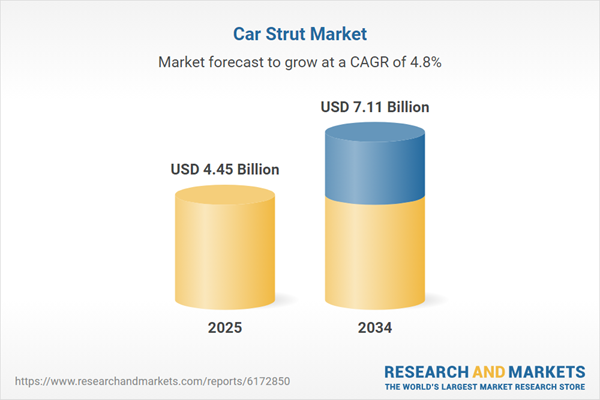Asia-Pacific to be One of the Leading Markets in the Car Strut Industry
The Asia-Pacific is one of the dominant regions for both shock absorber and strut market and is estimated to maintain its leadership in the global market during the forecast period, owing to the significant expansion of the auto industry, continuous increase in sales of passenger vehicles and commercial vehicles, and rise in the production plants of vehicle in countries such as China, Japan, and India.The automotive shock absorber and struts market in Europe and North America is also projected to expand at a steady pace during the forecast period.
Car Strut: Market Segmentation
Car strut acts as a mechanical component designed to repel longitudinal density. Car struts offer protection in the outward direction and allow other components to be kept separate. Car strut is a component of a vehicle frame, the car strut may be used as an inactive brace to support the chassis and body or as an active suspension component. Car struts are essentially a shock absorber structure and a spring. The spring maintains the weight of the vehicle and helps to adjust to road irregularities. The main function of a car strut is to serve as a shock absorber as a damper capable of handling sideways loads and not along the compression axis.Based on category, the industry can be divided into the following:
- Sealed
- Repairable
The type of material can be segmented as follows:
- Steel
- Aluminium
- Fibre-Reinforced Plastic
- Others
The location of usage of car strut can be categorised as follows:
- Front
- Rear
The type of the product can be segmented as follows:
- Gas Strut
- Pneumatic Strut
- Air Strut
- Others
The vehicle type can be categorised into the following:
- Passenger
- Commercial
The regional markets for car strut can be divided into:
- North America
- Europe
- Asia-Pacific
- Latin America
- Middle East and Africa
Automotive Sector Bolstering the Market Growth of Car Strut
The growth of the market is primarily being driven by the automotive industry. The growth in the penetration of coil springs in automobiles is expected to fuel the demand for automotive struts. The increase in the number of passenger vehicles is expected to improve the development of automotive struts during the forecast period. Increasing demand for lightweight strut materials is another significant trend likely to fuel the growth of the automotive struts industry. In addition, growing awareness of passenger safety is propelling the demand for advanced suspension systems. This, in fact, is driving the demand for automotive struts.Key Industry Players in the Global Car Strut Market
The report gives a detailed analysis of the following key players in the global car strut market, covering their competitive landscape, capacity, and latest developments like mergers, acquisitions, and investments, expansions of capacity, and plant turnarounds:- KYB corporation
- Bilstein GmbH
- ZF Friedrichshafen AG
- Hitachi Automotive Systems, Ltd.
- Gabriel India Limited
- Others
Table of Contents
Companies Mentioned
The key companies featured in this Car Strut market report include:- KYB corporation
- Bilstein GmbH
- ZF Friedrichshafen AG
- Hitachi Automotive Systems, Ltd.
- Gabriel India Limited
Table Information
| Report Attribute | Details |
|---|---|
| No. of Pages | 158 |
| Published | August 2025 |
| Forecast Period | 2025 - 2034 |
| Estimated Market Value ( USD | $ 4.45 Billion |
| Forecasted Market Value ( USD | $ 7.11 Billion |
| Compound Annual Growth Rate | 4.8% |
| Regions Covered | Global |
| No. of Companies Mentioned | 6 |









